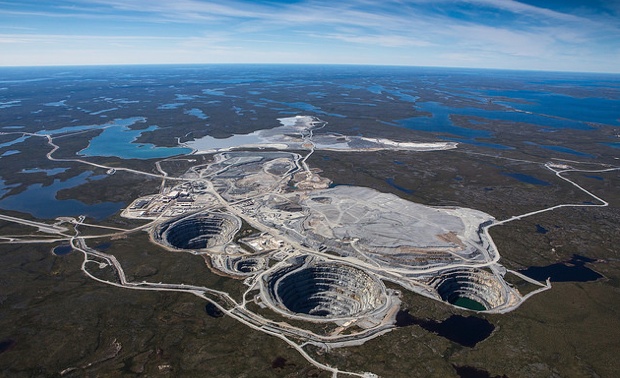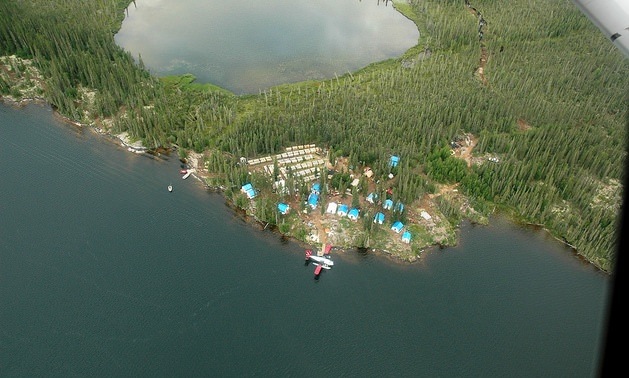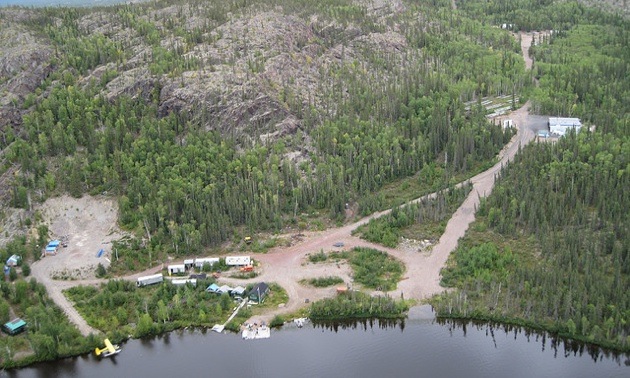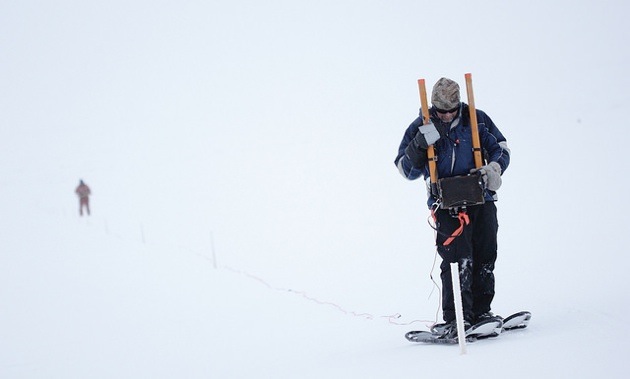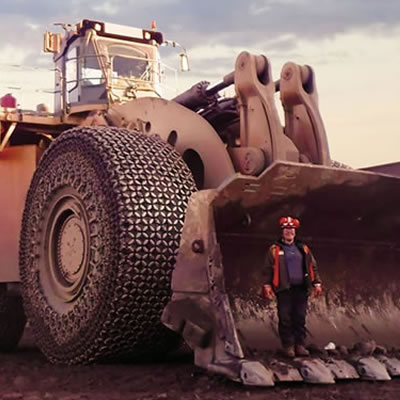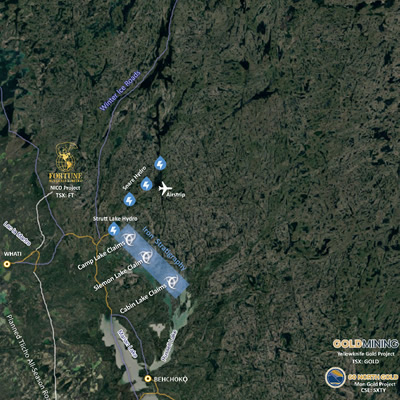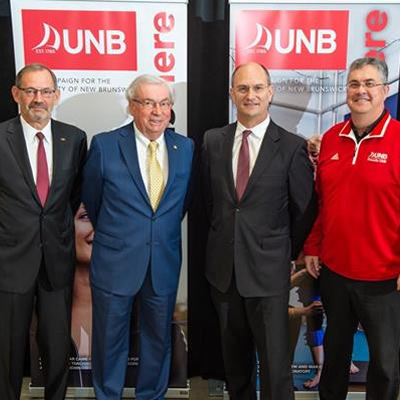Majors lead investment
The Northwest Territories experienced a 46 percent increase in exploration investment in 2013
Tom Hoefer, executive director for the NWT & Nunavut Chamber of Mines, said all indicators point to continued economic growth in Canada’s north for 2014.
The Chamber released a year end report in December that reflects data collected by Natural Resources Canada about how much Canadian mining companies spent in the Northwest Territories in 2013.
“The market in other regions of Canada’s north is pretty down right now for raising money,” said Hoefer, “but we were excited and surprised to see NWT is up, mainly because we have major projects in the environmental assessment, permitting, or fundraising phases. So those projects are now in a position to spend some money.
Ekati, Dominion Diamonds’ largest mine, has begun the environmental assessment process to mine three more kimberlite pipes, which would expand its mine life 10 or 20 years beyond its anticipated completion in 2019.
Canadian Zinc Corporation’s Prairie Creek zinc-lead-silver project received its permits to begin construction, and Avalon’s Nechalacho rare earth metals project received federal approvals to proceed to the licensing stages.
Both the NICO (Fortune Minerals) gold-bismuth-cobalt-copper project and the Gahcho Kué (De Beers and Mountain Province Diamonds) diamond project also received federal approval to move on to licensing and also received land use permits for site preparation in anticipation of receiving mine land use permits and water licences required for mine construction expected later in 2014.
“Our grassroots exploration has suffered like the rest of Canada, but there are still a small number of companies managing to finance work, largely on diamond and gold projects,” said Hoefer.
Of particular importance is Ekati’s extension beyond 2019. The company employs 1,500 people in the NWT and accounts for 10 per cent of the territory’s GDP.
“The closure of our largest mine, Ekati, would be a tremendous loss for us,” said Hoefer. “All other projects in this region don’t add up to how many people depend on Ekati.”
Infrastructure needed
Geographically NWT makes up one third of Canada’s area, yet it has only a few permanent roads, one small railroad, and two unlinked hydro power grids.
For the territory to remain competitive, the NWT government plans to address the infrastructure deficit, which currently means mining companies have to power their own sites and construct the 450 kilometre ice road each year.
“We have a lot of costs that companies wouldn’t have elsewhere,” said Hoefer. “Investment in something like cheaper, reliable power, for example, can do a lot.”
NWT’s visionary energy strategy released in December calls for a $700 million electrical expansion that could lower energy costs and enable the development of lower grade deposits.
“We need to link those grids to one another and join the grid to the south so we are linked into reliable power and opportunities,” said Hoefer. “It would provide cheaper power to communities and most importantly for resource development.”
Devolution April 1
The region has had its fair share of challenges, especially over the past five to seven years.
“Our exploration expenditures were flat-lining when everyone else was booming, flagging the challenges in our complex environmental regulatory system,” said Hoefer. “That, combined with unsettled land claims and a lack of aggressiveness in marketing, has caused many investors to go elsewhere.”
There is no doubt the NWT will overcome, beginning with devolution occurring on April 1, 2014. Responsibility for land and non-renewable resources will transfer from the federal government to the local territory, creating a new landlord that is more agile and quicker to move in support of industry.
Bill C-15, the Northwest Territories Devolution Act, was tabled in December. The omnibus bill contains provisions for regulatory improvement, including streamlining the Mackenzie Valley Resource Management Act to include time limits on environmental assessments and consolidated federal decision-making.
The NWT government launched its Mineral Development Strategy in November to identify actions to restore the territory’s investment attractiveness, and to help ensure its mineral resources benefit communities and the economy. The most recently tabled NWT budget identifies new investments in exploration incentives, geoscience and marketing.
“The detailed mineral development implementation plan will be invoked on April 1, when the government takes over responsibilities for minerals,” said Hoefer. “This is the government’s first ever stand-alone strategy, and it has a lot of positive support.”
Diverse opportunities
The key opportunity for the NWT is diversity. Its major projects include a range of materials from diamonds to precious and base metals and rare-earths.
“This is encouraging,” said Hoefer, “as we don’t have all of our eggs in one basket.”
The game changer for the NWT was the discovery of diamonds, production of which has placed the NWT in third place globally by value. Diamond mines provide significant benefits to communities and put into motion a tremendous push by aboriginal communities to be participants in those mines.
“Historically, from the 1930s to the 1990s we saw few Aboriginal workers at our mines,” said Hoefer. “From the 60s on the focus by government was to make communities stronger, with construction and provision of schools, nursing and other services and by the recognition of aboriginal rights in the constitution. This all helped increase the momentum that has helped drive such successful aboriginal participation in mining today.”
Today, nearly half of the northern mine workers are Aboriginal—mirroring the NWT’s population demographic and fuelling growth and advancement in those communities.
“Aboriginal communities are saying they don’t just want jobs; they want businesses,” said Hoefer, citing 1,000 per cent growth of Aboriginal-owned mining-related businesses in the last 15 years.
Into the future
Currently, mining and its related contributions to transportation and construction is responsible for over one-third of the NWT’s GDP. Hoefer hopes to see a rejuvenation of exploration and growth in mining to healthy and resilient levels over the next five years and beyond.
“While we’re experiencing a global market downturn right now, one thing we know is markets fluctuate like a rollercoaster,” he said. “You never know when we’ll be back at sustaining levels.
“But through such initiatives as the NWT Mineral Development Strategy, regulatory improvements, and devolution, we’re taking positive steps to be ready for the market upturn. Keep your eye on the NWT—or better yet, come and invest!”

